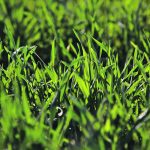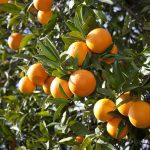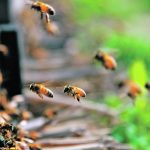Research team is working on breeding crops with better drought tolerance and reduced need for fertilizer
Scientists at Penn State University have made a discovery that could lead to a new variety of corn able to withstand drought and low-nitrogen soil conditions, potentially easing future global food insecurity.Stories by Margaret Evans

Waterhemp’s genetic adaptations discovered
Genetic mutations make it possible for the weed to rapidly adapt to agricultural conditions and environmental changes
A single waterhemp plant can grow 2.5 centimetres a day and, in a growing season, each single plant can produce up to 4.8 million seeds.
Cover crops may have potential to lower yields
Researchers have found the effect cover crops have on primary crops depends on the environment and how they are used
Recent research has shown that cover cropping could lower crop yields and lead to negative environmental impacts caused by expanded cultivation necessary to make up for those yield losses.
Resetting plants’ clocks could improve yields
Plant breeders may be able to exploit circadian rhythms using chronoculture to make improvements to crop production
In the past 25 years, studies on plant circadian rhythms — a 24-hour oscillator adapted to living on a rotating planet — show that they profoundly affect plant physiology.
Predicting gully erosion helps land management
A modelling framework using remote sensing environmental data can predict gully erosion susceptibility more accurately
Researchers at the University of Illinois developed a modelling framework using remote sensing environmental data to predict gully erosion susceptibility more accurately.
Gene family stimulates longer wheat roots

Plants can make chemicals for bee-friendly insecticides
Limonoids give citrus fruits their bitter taste and are also the active components in crop protection that doesn’t hurt bees
Plants have evolved ways to protect themselves using complex chemicals that can challenge even the most astute chemists. Collaborating researchers at the John Innes Centre in Norwich, United Kingdom, and Stanford University in California recently revealed the enzymes that certain plants, such as mahogany and citrus, use to make limonoids. These molecules are the compounds […] Read more
Honeybee lifespans appear to be shrinking
Recent experiments find that the mean average lifespan was half that of caged bees in similar studies in the 1970s
A study by entomologists at the University of Maryland has shown that the lifespan of individual honeybees kept in a controlled laboratory environment is 50 percent shorter than it was in the 1970s. Over the past decade, many beekeepers have reported high loss rates requiring more replacements to keep their operations viable. Much of those […] Read more
Soil temperature can help predict corn earworm spread
Winter temperatures in the soil can be used as a way to predict the following growing season’s insect pest populations
Corn earworm is a significant pest that ravages not only sweet corn but cotton, soybeans, peppers, tomatoes and other vegetable crops. Monitoring it in a way that would help farmers predict where it could appear in the next growing season could be significant in controlling it more effectively. An adult corn earworm is a buff […] Read more




